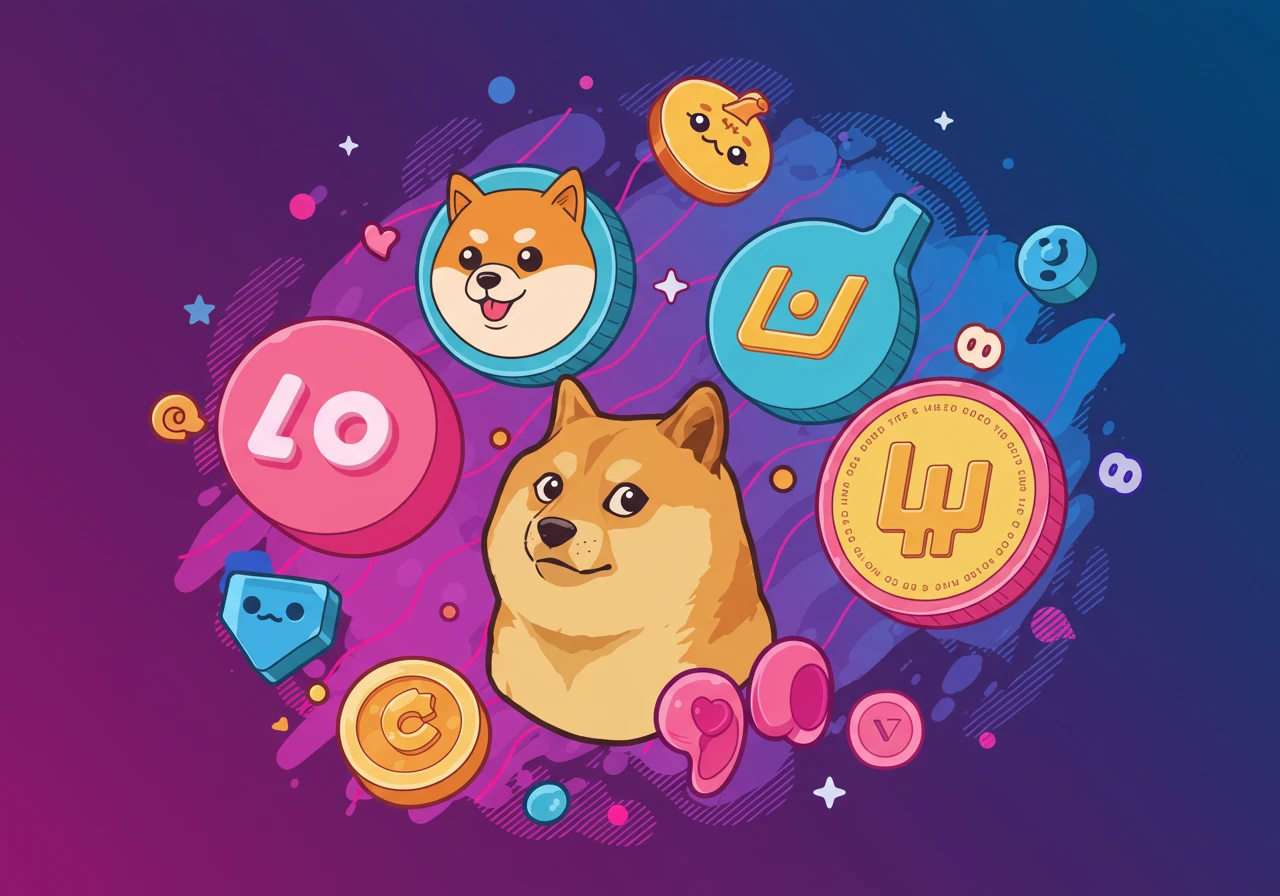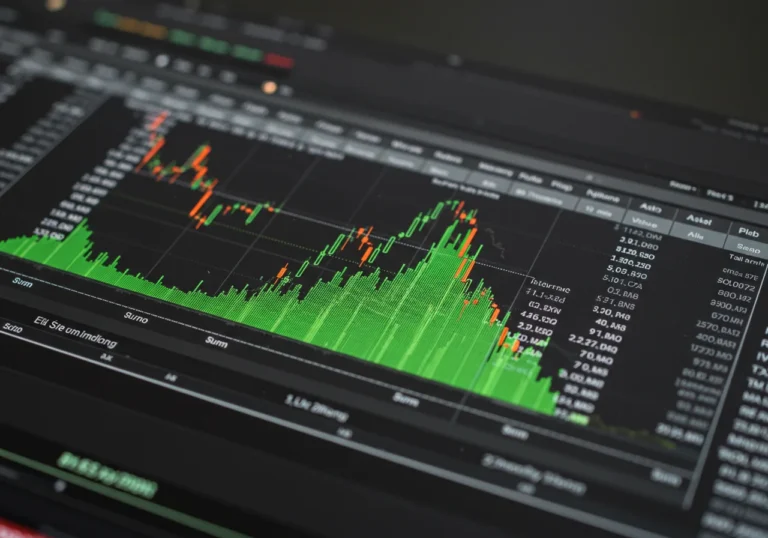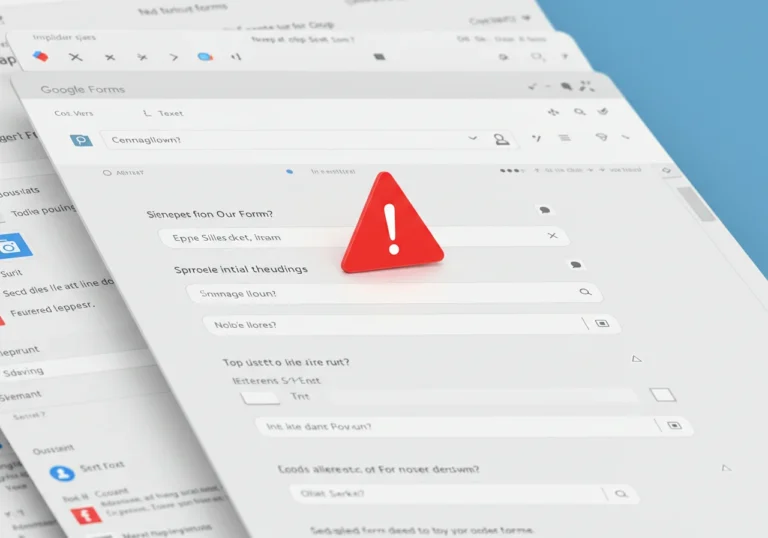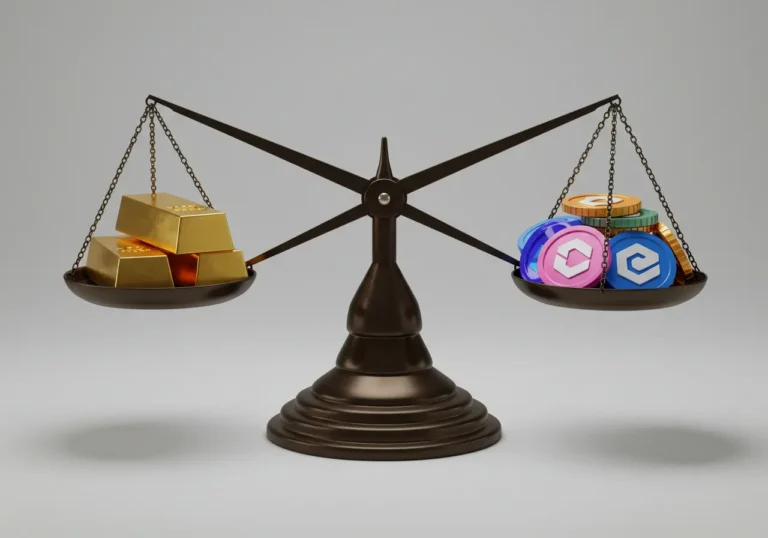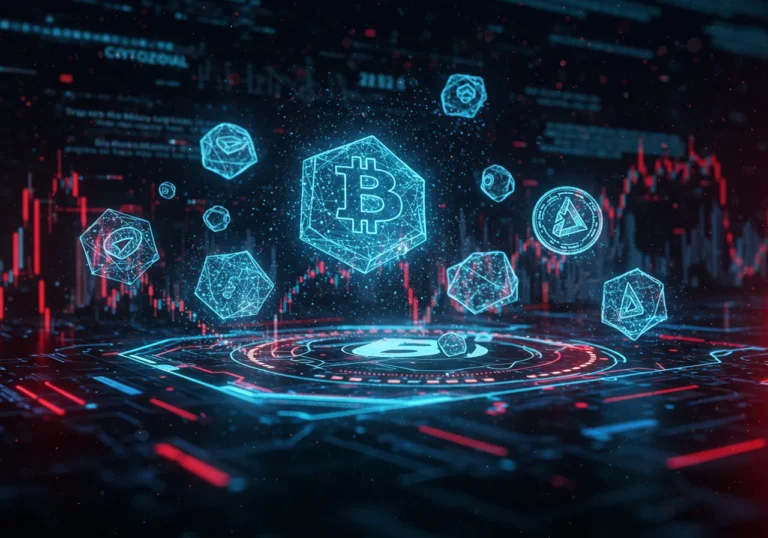What is a Memecoin? Hype, Joke, or the Next Big Thing?
What is a Memecoin in short? At heart, it is a cryptocurrency created around a joke, a meme, or a cultural reference. People make them for fun, for community, or sometimes with serious aims hidden behind a playful face. Some memecoins stay small and silly. Others attract huge communities and massive capital. The tricky part is telling which path a coin will take before you buy in.
What is a Memecoin
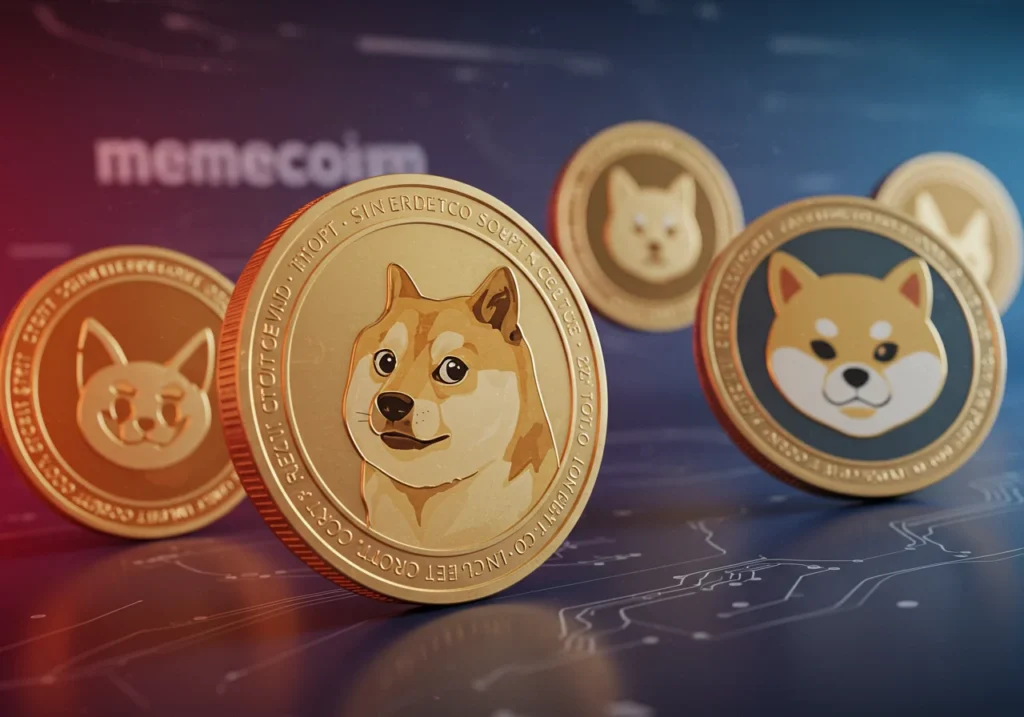
A memecoin is a digital token that uses internet culture — a picture, a catchphrase, or a viral joke — as its brand. Think of a picture of a dog that makes people smile. Somebody turns that image into a token, posts it online, and a community forms. That community can drive the price up, simply because people enjoy being part of it. The Definition of a Memecoin is not technical; it’s cultural. It’s about people, not code.
Memecoins often have these traits:
- Cute or funny branding tied to a meme.
- Low technical complexity at first, often launched quickly.
- A strong social-media presence, where price moves depend on community hype.
- Heavy volatility: big gains are possible, but so are big losses.
Now let’s walk through why memecoins attract attention, how to think about value, and what smart steps you can take if you want to look closer.
Where memecoins come from and why people love them
Memecoins often start as a joke on a forum or a social platform. A small group mints tokens and lists them on a decentralized exchange. The meme spreads. People buy in because it’s fun or because they hope to profit. When many people join quickly, the price rises. That rise draws more people. The cycle can feed itself — for a while.
People love memecoins for three big reasons:
- Community and identity. Being part of a meme project feels like being in on the joke. That social tie can be very strong.
- Short-term profit stories. Big, fast gains make headlines. People feel they can time a jump and cash out.
- Low barrier to entry. It’s easy to buy or mint memecoins on many platforms.
That mix makes memecoins feel alive. But it also makes them risky. A meme can fade overnight. A community can move on. The price can collapse with no technical reason.
How value works for memecoins — not the same as regular tokens
Traditional tokens tend to have a clear utility: they pay fees, run a network, or grant access. Memecoins usually don’t start with those functions. Their value comes from social interest. That means value depends on how many people want to hold or trade the token at any moment.
Some memecoins evolve. Communities add features: charitable donations, NFT projects, or staking rewards. When that happens, a memecoin can develop a clearer use case. But many remain symbolic: a token you hold because it makes you feel part of something.
Because of that, Memecoin price prediction is especially uncertain. Predicting price usually means predicting human behavior — trends, jokes, celebrity tweets. That’s harder than forecasting supply-demand in a traditional market.
Early signals to watch in memecoin market analysis
If you want to evaluate a memecoin, look beyond the cute logo. Here are practical signals used in Memecoin market analysis:
- Community size and activity. Check social channels. Are people engaged? Or is the account quiet? A lively, honest community helps, but hype can be manufactured.
- Liquidity and trading volume. Real markets need buyers and sellers. Look for sustainable trading volume. Thin markets mean big price moves from small trades.
- Token distribution. Who holds the tokens? If a few wallets control most supply, they could sell and crash the price.
- Developer transparency. Even memes benefit from clear rules: roadmaps, audits, and public teams reduce some risks.
- Liquidity lock and burn events. Some projects lock liquidity or burn tokens to show commitment. These are signs to check, not guarantees.
- External backing or partnerships. Real adoption usually comes with concrete partners or merchant acceptance.
Market analysis for memes is part data, part detective work. Be skeptical of polished PR. Check raw numbers on-chain and read community conversations with care.
Common memecoin categories — not all memes are the same
Memecoins fall into different groups:
- Pure joke memecoins. No roadmap, purely playful. These are the highest-risk and most speculative.
- Community-driven memecoins. Strong social governance and charity or community goals. They sometimes become more stable.
- Meme projects with utility. They add NFTs, staking, or revenue shares later — a hybrid path.
- Celeb-backed memecoins. When public figures promote a token, it can spike. That can be profitable or disastrous, depending on motives.
Understanding the category helps shape your expectations and strategy.
Memecoin price prediction: reality versus headline stories
People love bold Memecoin price prediction headlines. But predicting meme prices is guessing the mood of millions. Still, there are some ways to think sensibly:
- Short-term spikes often follow social signals: celebrity mentions, viral tweets, or trending tags.
- Sustained rises need continued attention: new features, merchant acceptance, or growing liquidity.
- Most memecoins eventually drop if nothing else supports them. That’s the default outcome, not the exception.
If you see a wild claim about a token “going to the moon,” treat it like a rumor. Build scenarios: best case, likely case, worst case — and plan your exposure accordingly.
Practical memecoin investing strategies for cautious participants
If you decide to engage, use clear, conservative rules. These Memecoin investing strategies are simple and protective:
- Allocate a small percentage. Treat memecoins as high-risk entertainment. Many experienced investors limit them to a small slice of their portfolio — for example, 1–5%.
- Use dollar-cost averaging. Instead of one big buy, spread purchases over time to reduce timing risk.
- Set exit rules. Decide in advance when you’ll take profits or cut losses. Emotions are dangerous in fast markets.
- Keep liquidity in mind. Only invest what you can afford to hold for a while or sell easily. Thin markets can trap you.
- Avoid leverage. Using borrowed money in a memecoin trade is a quick route to big losses.
- Check approvals and scams. Don’t approve unlimited token allowances for sketchy contracts. Verify official links and use trusted wallets.
- Consider hardware wallets for bigger sums. Safety of private keys matters even for small tokens.
These tactics won’t guarantee profit. They will reduce avoidable damage.
Real stories: a memecoin rise and fall, told simply
A friendly example helps. A small group created a token tied to a funny dog image. They posted it on a weekend and a forum thread blew up. Within a day, price surged as more people bought. A celebrity retweeted the image. The price doubled. Many sellers took profits. A week later the novelty faded. Buyers who entered at the peak saw sharp losses.
Contrast that with a project that started as a meme but quickly added a charity arm and an NFT collection. That project kept attention and slowly built more users. Its price was volatile but less disaster-prone because the token gained utility.
Stories like this show that a memecoin’s path depends heavily on choices after launch — community building, transparency, and real use.
How to spot obvious red flags
Watch for these warning signs before you buy:
- Anonymous teams with no proof of past work and large token allocations.
- Promises of guaranteed returns or locked profits.
- Pressure to buy right away from influencers or chatrooms.
- Unverified contract code and no audits.
- Fake celebrity endorsements or copied social profiles.
If a project checks many red boxes, it’s safer to stay away.
Practical steps to participate responsibly
If you want to try a memecoin for fun:
- Do tiny, test-size buys first. Treat it like entertainment.
- Use reputable exchanges or DEX interfaces and verify contract addresses.
- Keep records of transactions (for taxes and auditing).
- Follow community channels but verify facts independently.
- Be ready to accept full loss. That mindset changes how you act.
The bigger picture: memecoins and crypto culture
Memecoins reflect a larger truth: cryptocurrency is as much about people as tech. They show how culture, humor, and community can become economic force. Some argue memecoins democratize finance — anyone can create a token and build a following. Others see them as noise that distracts from useful innovation.
In time, some memecoins might evolve into meaningful projects; others will remain jokes that faded. At the end of the day, strong projects are often those that combine culture with purpose.
Conclusion
So, What is a Memecoin? It is a cultural token: part joke, part community signal, and sometimes part financial instrument. Memecoins can be entertaining and rewarding for some. They are also risky and often driven by emotion and hype. For most people, the wisest approach is modest participation, careful research, and clear exit rules.
If you’re curious, test the waters gently. If you’re investing seriously, prioritize tokens with real utility and strong fundamentals. Whether memecoins are the next big thing or the loudest fad depends on each coin’s path — and on how communities choose to build or abandon them. At the end of the day, keep your eyes open and your exposure small.
Quick takeaways
- Definition of a Memecoin: a token built around a meme or cultural reference rather than initial technical utility.
- Memecoins are highly volatile; Memecoin price prediction is largely speculative and tied to social trends.
- Use Memecoin market analysis: check community activity, liquidity, token distribution, and dev transparency.
- Practice cautious Memecoin investing strategies: limit size, set exit rules, use dollar-cost averaging, avoid leverage.
- Watch for red flags: anonymous teams, large team holdings, fake endorsements, and unverified contracts.
- Consider memecoins entertainment with upside, not a core investment strategy.
FAQ
Q: Are memecoins real investments?
A: They can be, but they are usually speculative. Treat memecoins as high-risk and consider them only as a small part of a diversified plan.
Q: Can memecoins become useful projects later?
A: Yes. Some memecoins evolve by adding real features, partnerships, or charitable work. That transition takes time and clear direction.
Q: How should I decide how much to invest in a memecoin?
A: Many experts suggest a small percentage of your portfolio (1–5%) for speculative tokens. The exact amount depends on your risk tolerance.
Q: What tools help analyze memecoins?
A: Use on-chain explorers, token trackers, social analytics platforms, and liquidity dashboards to check activity, holders, and volumes.
Q: Is social media the only driver of memecoin prices?
A: Social media is a major driver, but liquidity, tokenomics, celebrity mentions, and wider market trends also play roles.
Q: Are memecoin scams common?
A: Scams exist and are common. Many memecoins are harmless jokes, but some are designed to deceive. Careful checks reduce the chance of falling for bad projects.
Table of Contents

Hello, I’m Edmilson Dias, founder of CoinBringer. I created this platform to guide people through the fast-moving world of cryptocurrency with clarity and safety. With years of research in blockchain and digital security, my goal is to translate complex topics into practical knowledge, offering reliable tutorials, safety insights, and guidance for both newcomers and experienced users.
Discover more from CoinBringer
Subscribe to get the latest posts sent to your email.

